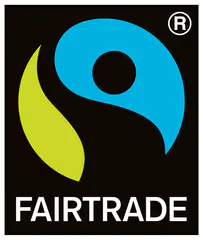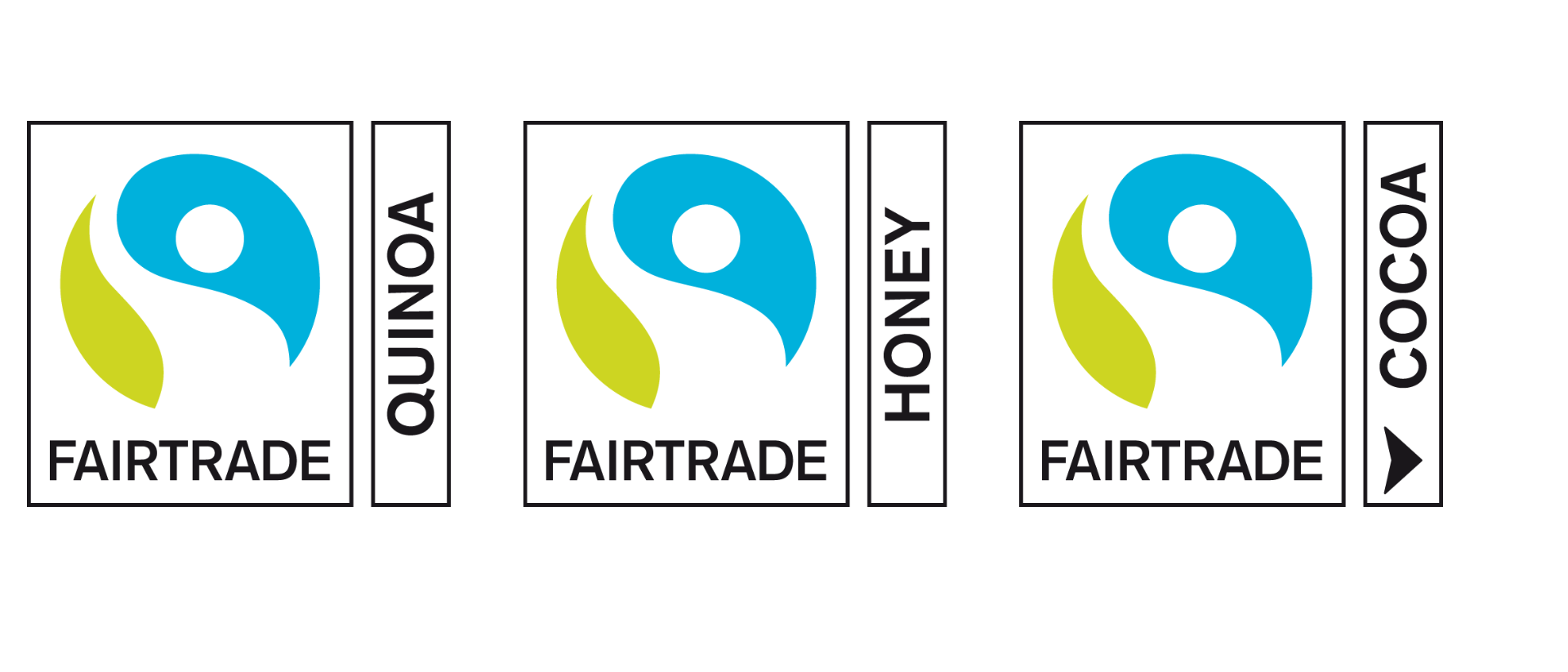Guidelines for use of the FAIRTRADE Mark
The FAIRTRADE Mark guidelines provide brands with requirements on using the Mark and the term Fairtrade.
The FAIRTRADE Mark is used when the ingredients in a product meet the requirements of the international Fairtrade Standards. Learn more about the different FAIRTRADE Marks, and what Fairtrade certification means.
Products can be labelled with the FAIRTRADE Mark when the company has signed the corresponding license contract with Fairtrade International or a National Fairtrade Organization and the products have been approved.
In all cases, the use of any FAIRTRADE Mark, whether on-pack or on promotional materials, requires prior written approval from Fairtrade International or the designated licensing body.
For questions about these guidelines or obtaining approval to use the FAIRTRADE Mark on-pack or promotional materials, please fill out the inquiry form here.
The FAIRTRADE Mark
When you see this mark on a product, all its ingredients have met the Fairtrade standards. They are also fully traceable (kept separate from non-certified products) from farm to shelf. Most often, this mark can be found on single ingredient products like coffee, rice, or bananas.

The FAIRTRADE Mark is used when a product has only one ingredient (e.g. bananas, coffee, cashew nuts etc.) that is Fairtrade certified and is physically traceable.The FAIRTRADE Mark with an arrow is used on products with multiple ingredients, such as chocolate bars or cereal. All the ingredients that are available under Fairtrade conditions have to be purchases under Fairtrade terms (e.g., all the cocoa, sugar and vanilla). This Mark is also used on single-ingredient products that have been sourced using “mass balance.” This is possible only for cocoa, sugar, fruit juice and tea.
Download the FAIRTRADE Mark Guidelines.
The FAIRTRADE Mark must always be accompanied by the Fairtrade on-pack claim. Download the FAIRTRADE Mark Claims Translations.
The FAIRTRADE cotton Mark
The FAIRTRADE Cotton Mark is used when the product contains at least fifty percent of cotton and all of the cotton used in the product is Fairtrade certified and physically traceable.
Download the FAIRTRADE Cotton Mark Guidelines.
The FAIRTRADE gold Mark
The FAIRTRADE Gold Mark is used when the total of gold content is Fairtrade certified and physically traceable. The tab indicates that only the gold is Fairtrade certified, so it can be applied to jewellery with other elements like precious stones.
Download the FAIRTRADE Gold Mark Guidelines.
The FAIRTRADE Sourced Ingredient (FSI) Mark
The FAIRTRADE Sourced Ingredient (FSI) Mark is used when a product has multiple ingredients, but only one* of them is purchased on Fairtrade terms. One hundred percent of the chosen Fairtrade ingredient in composite products, product ranges or categories must be sourced on Fairtrade terms in order to use the FSI Mark.
*In some cases more than one of the ingredients can be purchased on Fairtrade terms, but not all.
Download the FSI Mark Guidelines.
The FSI Mark must always be accompanied by the FSI on-pack claim. Download the FSI Claims Translations.
Fairtrade Textile Production Mark

The Fairtrade Textile Standard sets the requirements in the textiles supply chains that apply to the workers that manufacture textiles. Fairtrade has created a special Fairtrade Textile Production Mark to express compliance with the Fairtrade Textile Standard in graphic terms. It can be used in communications and on textile products whose supply chains meet the standard requirements.
In order to use this Mark to identify products, a company or brand must source from a supply chain that is one hundred percent certified against the Fairtrade Textile Standard and sign the corresponding license contract with Fairtrade International or a National Fairtrade Organization. The products are made with Fairtrade cotton or with other responsible fibres included in an Annex in the Textile Standard.
Download the FAIRTRADE Textile Production Mark Guidelines.
Download the FAIRTRADE Textile Production Mark Quick Guide.
Product composition policies for non-food products
The product composition for these non-food Fairtrade products varies from the composition rules stated in the Fairtrade Standards for food products. There are two global policies for non-food product composition:
FAIRTRADE Cotton Mark
The Global Fairtrade Certified Cotton Composite Products Policy defines the conditions under which products that contain cotton can be labelled with the FAIRTRADE Cotton Mark. This policy applies to products that contain other fibres apart from cotton, and these fibres do not exist as Fairtrade. The policy establishes, among other things, that all of the cotton must be Fairtrade and out of all the fibres in the product, the minimum Fairtrade cotton content must be 50%.
FAIRTRADE Mark for cosmetics
The Fairtrade Certified Cosmetics and Personal Care Products Formulation Policy was created to enable more sales for Fairtrade producers for products that contain only small amounts of natural or naturally derived ingredients. The policy outlines the specific formulation guidelines under which such products can be labelled with a special version of the FAIRTRADE Mark.
Since the introduction of the Fairtrade Sourced Ingredient (FSI) model and FSI Mark in March of 2019, most cosmetics and personal care products are being labelled with the FSI Mark, which offers more flexibility for this product category. The policy and thus use of the special version of FAIRTRADE Mark will therefore be phased out by end of 2020 to mid-2021, depending on the market.